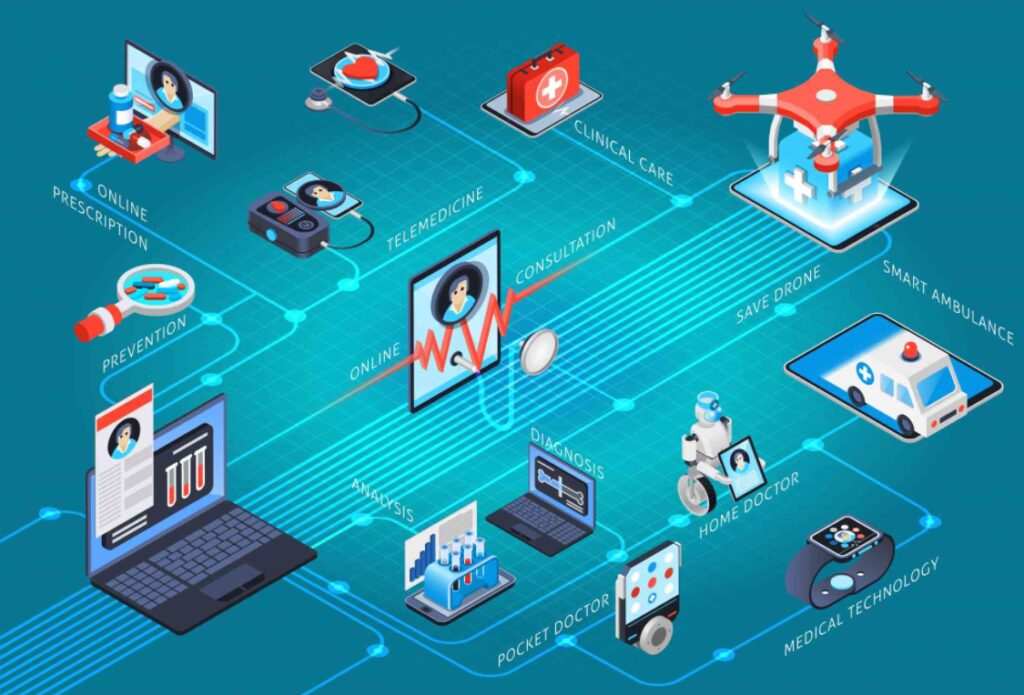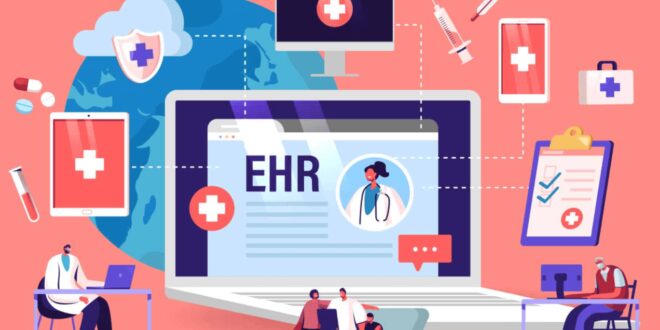Founded in 1979, Epic has consistently ranked as the most popular EHR system in the US healthcare industry. It is now used by a vast number of healthcare facilities from small practices to large health systems. 45% of the US population have their EHRs stored within the Epic system with leading medical institutions relying on Epic for electronic health record management.
Therefore, if you’re looking to build a healthcare solution for an Epic-friendly medical institution, you’ll have to integrate it with the EHR/EMR system to access patient information.
Today, we’ll shed light on the Epic EHR integration and its importance. We’ll also go over the major benefits of Epic and its feasibility in specific cases.
What Is Clinical Interoperability In Healthcare?

One of the reasons why Epic has reached this peak of popularity is its ability to foster healthcare interoperability. Clinical interoperability is used to denote the ability of patient-care devices and systems to exchange, interpret and use medical data cohesively for easier access.
This seamless flow of information assists hospitals in providing personalized care and effective health management.
The Interoperability and Patient Access final rule was published by the Office of the National Coordinator for Health Information on March 9, 2024. The interoperability regulation’s main purpose is to establish a legislative framework for ensuring smooth and safe health information transmission while also reducing information blockage.
Furthermore, the rule promotes the use of Application Programming Interfaces (APIs), which make sensitive data secure and available to all parties participating in the healthcare industry. It now necessitates the integration of medical software solutions with EHR/EMR APIs.
A Few Words On Electronic Health Records

An Electronic Health Record or EHR is a virtual collection of a patient’s official health documents that are shared among healthcare institutions or professionals. The role of EHRs is to enable standardized formats for patient data so that it can become easily accessible for healthcare providers.
Unified formats further promote the transportability and interoperability of digital health records. Also, since a growing number of consumers rely on mobile access, EHRs become a necessity in the mobile-first healthcare industry.
Among other types of information, EHRs usually include:
• Insurance information;
• Family history;
• Allergies;
• Medical appointments;
• Contact information, etc.
EHRs place a greater emphasis on the patient’s entire health, rather than merely medical issues disclosed by lab test results and diagnoses in EMRs.
A Few Words On Electronic Medical Records

Electronic Medical Records refer to the digital alternative of paper patient records. It includes information related to a particular medical area. Unlike EHRs that store comprehensive information about one’s health, EMRs contain the patient’s medical and treatment history from one practice and aren’t shared across different facilities.
Thus, it contains information you’d usually provide in a paper chart, such as medical history, diagnoses, lab results, and doctor’s notes.
Why Your Healthcare Software Should Be Epic

Now that we’ve grappled with the basics, let’s focus on Epic integration. Essentially, Epic software is an EHR management application that allows healthcare providers to easily update, store and access patients’ medical and health records.
The main benefits of Epic EHR/EMR integration include:
1. Simplified access for patients
The interoperability feature of Epic allows your staff and patients to quickly and easily look at their medical records and test results. Also, this system minimizes the challenges of data transfer from one medical institution to another if needed. Coupled with biometric functionality, your Epic application provides secure patient identification and increased data safety.
2. Unlimited integration possibilities
Epic software is compatible with virtually any healthcare application in use. Therefore, you can amplify any existing system and unlock shareable clinical pathways.
3. Streamline billing
Integrating Epic with your billing processes allows you to process patient payments. Moreover, integration features include automated sending of payment to the right patient account within Epic. Payment plans and other payment processes also get streamlined without manual effort.
4. Better clinical decision support
Also, the EHR integration can help healthcare providers access medical data more easily which accounts for more streamlined clinical decision support. Clinical groups can also get and monitor test results directly within their existing workflow.
Who Needs Epic EHR/EMR Integration?

Integrating your clinical pathways with Epic EHR/EMR will allow for seamless transitions from current operating procedures to more efficient and easy-to-use systems. Interoperable software will enable your clinicians to maintain all-encompassing control over their workflow while staying more informed and equipped to provide better treatment.
Moreover, Epic EHR/EMR integration comes complete with other data-enabled activities. Whether it’s accurate AI data analysis, or data visualization, a set of smart technologies will lead to more accurate and efficient care.
However, data unification doesn’t bode well for all systems. Here’s when Epic integration is suitable for your healthcare business:
• It’s a provider-centered software for medical institutions;
• You don’t have to push data to the Epic system;
• Your existing database is small or mid-size. (Epic integration is not suitable for processing large databases).
What Does The Integration Process of Epic USCDI API Look Like?

The complete process of integrating your pathways with Epic is different for each provider. However, some core steps remain intact for all cases.
Thus, you first need to make sure that Epic supports the resources where the needed data is stored. After that, you need to sign up to uscdi.epic.com, register your account, and revise the available data.
Also, the existing system on-site should have all the necessary endpoints for the API. It may encompass medications, medical history, lab data, and others. Once you make sure you have all the data you need, you can test the API against example data.
Finally, you can integrate your solution with Epic EMR/EHR by accessing the FHIR API. The process is successfully finished when your app gets registered with Epic.
If you’re not sure you have the right skills to perform this unification, you can turn to software vendors for smooth EPIC integration.
For more information about Epic EHR integration – https://theappsolutions.com/blog/how-to/how-to-integrate-your-health-app-with-epic-ehremr/
The Final Word
A growing number of healthtech solutions will have to include FHIR-based, standardized APIs for healthcare by the end of 2024. Therefore, the amount of FHIR-enabled applications will snowball.
The Epic USCDI API not only has the potential to change healthcare software but also provides a complete view of patient data. As a result, healthcare providers will achieve higher levels of medical treatment and a more gratifying patient experience.
 Imagup General Magazine 2024
Imagup General Magazine 2024



